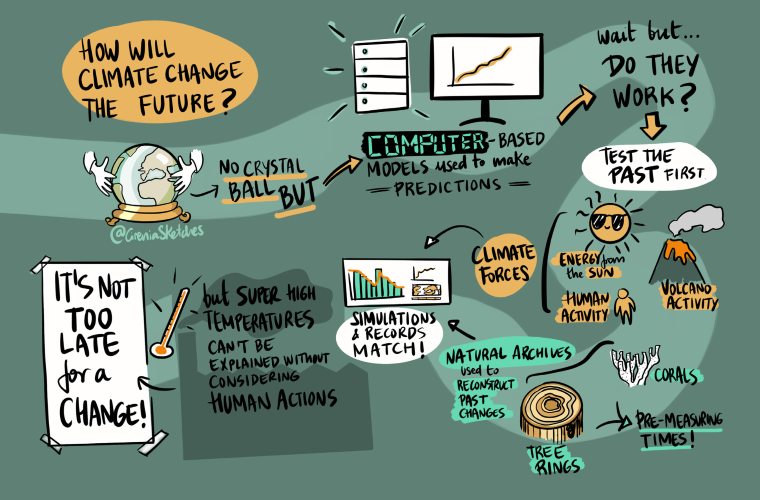Over 30 scientists, researchers, and artists worldwide have joined forces to publish the premiere online issue of Past Global Changes Horizons magazine. Printed in English, the collection of 18 short papers has been combined with detailed pictures, comics, and drawings, as well as teaching tips, to help students and teachers discuss the history of our planet’s ecosystem, along with the multiple challenges facing the environment today, and their impact on tomorrow.
“The younger generation is being bombed with fake news, extremism, and environmental anxiety,” says Garciela Gil-Romera, a postdoctoral researcher from the Intituto Pirenacio de Ecologia, CSIC, in Zaragoza, Spain, and one of the editors of the premiere issue. “Scientists have produced this magazine for them to show that we can all be scientists, and to create not only more environmental awareness, but also to inspire them that there is still time to build a better future, and we know this thanks to the past.”
Background: What is Past Global Changes Horizons Magazine?
When discussing the motivation behind such an all-out effort, Dr. Gil-Romera explains that one of the primary drivers for so many researchers and artists who participated is a glaring lack of relatable material for the influential minds of this crucial age group.
“This is precisely the age group where more [of this type of material] is needed to help shape their transition into decision-makers in adulthood,” she said.
Along with Dr. Gil-Romera, and the Pages Science Officer and Editor-in-Chief Sara Eggleston who oversaw this pioneering effort, the doctor’s overarching sentiment is shared by another of the program’s editors and contributors, Boris Vannière, Director of Research, CNRS at the Université de Bourgogne Franche-Comté, in Besançon, France.
“Dissemination of scientific knowledge requires more attention and direct efforts on the part of scientists to reach and address all members of society,” says Vannière, “especially the younger generation.”


Analysis: How the Past Global Changes Horizons Magazine Targets Young People
The 18 articles featured in the 1st online issue (which will also be available for print in May with a second printed planned for October of this year) cover a range of different climate-specific environments from across the planet, including caves and oceans, the frozen tundra of Antarctica and the lush rift valley in Africa. Each article also addresses specific scientific questions posed by experts in that particular field while simultaneously including understandable, relatable figures and images designed by the program’s artists specifically for the magazine’s target audience.
And along with the program’s primary goals, Vannière also sees a critical socio-political necessity to helping young people understand their planet and the policies that dictate how we interact with it.
“The objective of education is to contribute to citizen power and democratic life,” says Vannière. “Only well-informed people can judge government action. Scientific advisors are useful, but only citizens who can nurture their free will will [sic] be able to see clearly the promises and uncertainties ahead, and then be freer and stronger.”
Outlook: Educating the Young for Tomorrow
As for planned future editions of the annual publication, the press release announcing the magazine’s premiere states that “all topics that echo the younger generation’s questions about our relationship with the environment and the Earth system, and their history, are encouraged for future issues.”
Follow and connect with author Christopher Plain on Twitter: @plain_fiction
Don’t forget to follow us on Twitter, Facebook, and Instagram, to weigh in and share your thoughts. You can also get all the latest news and exciting feature content from The Debrief on Flipboard, and Pinterest. And subscribe to The Debrief YouTube Channel to check out all of The Debrief’s exciting original shows: The Official Debrief Podcast with Michael Mataluni– DEBRIEFED: Digging Deeper with Cristina Gomez –Rebelliously Curious with Chrissy Newton

